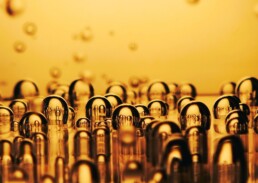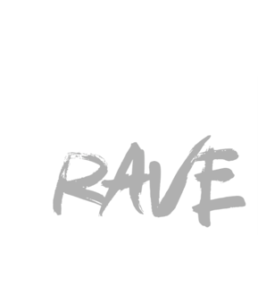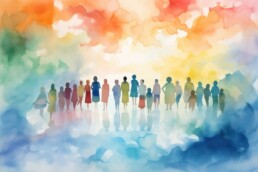How to Avoid High Gas Fees When Minting NFTs
Minting Non-Fungible Tokens (NFTs) can be an exciting process, but also challenging. High gas fees can sometimes make it costly, especially on networks like Ethereum. That is mainly why in DAFNE+ Platform runs under Polygon. Nevertheless, gas fees are required to process blockchain transactions, and when network traffic is high, these fees can be very high. However, there are ways to minimize costs while still successfully minting your NFTs.
Mint During Off-Peak Hours
Gas fees fluctuate throughout the day based on network congestion. By minting during off-peak hours, you can save significantly.
Use Layer 2 Solutions
Layer 2 networks like Polygon, Optimism, and Arbitrum offer significantly lower gas fees than Ethereum’s mainnet. Many NFT platforms now support these alternatives, allowing you to mint NFTs at a fraction of the cost.
Try Lazy Minting
Platforms like OpenSea offer lazy minting, where an NFT is only minted when it is purchased. This means you don’t have to pay upfront gas fees, making it a cost-effective option for artists.
Explore Alternative Blockchains
Ethereum isn’t the only option for NFTs. Blockchains like Polygon, Tezos, or Solana, offer cheaper minting fees while maintaining security and efficiency.
Set Custom Gas Limits
When minting, you can manually set a lower gas fee. However, setting it too low may cause transaction delays or failures.
By using these strategies, you can mint NFTs without breaking the bank and maximize your earnings as an artist or collector.
What Are Gas Fees and Why Do They Matter in Blockchain?
When you interact with blockchain networks like Ethereum, Polygon, or Solana, you’ve probably noticed something called gas fees. But what exactly are gas fees, and why do they play such a crucial role in blockchain transactions?
First of all, we should understand what gas fees are. Basically, they are the transaction fees required to execute operations on a blockchain network. These fees compensate the network’s validators (or miners) for the computational power they use to process and confirm transactions. Whether you're sending cryptocurrency, minting an NFT, swapping tokens, or using a decentralized app (dApp), you need to pay gas fees to ensure your transaction is recorded on the blockchain.
How do Gas Fees Work?
Gas fees are measured in small fractions of cryptocurrency and the total fee depends on several aspects such as network demand. This means that the more people use the blockchain, gas fees increase due to high competition for transaction space. During periods of congestion, fees can become very expensive.
Another key aspect is transaction complexity, so more complex transactions like NFT minting or smart contract interactions require higher fees since they consume more computational power. The last aspect to take into account will be the blockchain type. As you may already know there are different blockchains have different fee structures. For example, Ethereum (Proof of Work) has higher fees than Polygon or Solana, which use more efficient Proof of Stake mechanisms.
Gas fees are essential for keeping blockchains secure and functional, but with the right strategies, you can minimize costs and optimize transactions in the decentralized world.
RAVE Model Challenge by IRCAM
Ircam is celebrating a contest called RAVE Model Challenge for music creatives. The aim of this challenge is to support the authors of the best models and collectively establish a repertoire of RAVE models, enabling everyone to benefit from the richness and variety of approaches in the field of timbre/music transfer.
The challenge is organized through DAFNE+ platform, which promotes content sharing through the use of NFTs. Ircam has elaborated a step-by-step tutorial with which learn how to apply. Participation is completely free of charge, since it is based on the testnet network set up for research purposes only.
The period for application has been extended til next Monday 10th of February (Midday CET).
Next steps and dates are as follows:
- Public vote starts from the 11th of February 2025 (noon CET) to the 28th of February 2025 (noon CET).
- Award ceremony in March 2025
CRAFTINNOVA will host a workshop about DAFNE+
If you are curious about the intersection of traditional crafts and cutting-edge technology you should be vigilant of a very interesting event that is going to take place. This is Craftinnova conference where DAFNE+ Ambassador Jorge Muñoz Zanon, a Master in Design for Emergent Futures student at FAB LAB Barcelona, will host an exciting workshop about DAFNE+
This workshop will explore how emerging technologies like digital fabrication, blockchain, and decentralized organizations (DAOs) are transforming the crafts sector, empowering creators, and opening up new possibilities for sustainable and innovative practices.
Webinar: DAFNE+: a platform for archiving and promoting experimental music and sound production
Ircam, one of the partners of the DAFNE+ Project is going to celebarate a webinar in which they will explain the project but also they will show the attendants how to mint a content in DAFNE+ Platform. This workshop will take place on December, 11th, 2024 at 12:00 UTC+1 via zoom.
The aim of this webinar is not only show how to use the platform but also to introduce their contest RAVE, which is an artistic challenge.
The aim of this challenge is to support the authors of the best models and collectively establish a repertoire of RAVE models, enabling everyone to benefit from the richness and variety of approaches in the field of timbre/music transfer.
RAVE (Real-Time Audio Variational Auto-Encoder) is an algorithm designed to synthesize high-quality audio waveforms in real time using neural networks. It exploits a variational autoencoder (VAE) architecture, which compresses audio data into a compact latent representation, enabling efficient reconstruction of audio signals.
From Galleries to Blockchain: The New Age of Art Collecting
The world of art collecting is undergoing a profound transformation, thanks to the rise of NFTs (Non-Fungible Tokens) and digital art. What was once the exclusive domain of galleries, auction houses, and private collectors is now becoming accessible to a broader audience, democratizing the way we buy, sell, and experience art. At the heart of this revolution is blockchain technology, which is not only changing the way art is owned but also offering new opportunities for artists and collectors alike.
Democratizing Art Collecting Through Blockchain
Traditionally, art collecting has been a privilege reserved for a select few, often requiring significant financial resources, insider knowledge, and access to exclusive networks. However, the advent of blockchain technology is leveling the playing field, making art more accessible to everyone. Here’s how:
Global Accessibility: Blockchain and NFTs have removed geographical barriers, allowing anyone with an internet connection to participate in the art market. Whether you’re in New York or Nairobi, you can browse, buy, and collect digital art from around the world with just a few clicks.
Fractional Ownership: NFTs enable fractional ownership, meaning that multiple people can own a piece of digital art. This lowers the entry barrier for collectors, making it possible to invest in high-value art pieces without needing to purchase the entire work. It’s a game-changer for democratizing ownership.
Transparency and Security: Blockchain technology ensures transparency and security in the art market. Each NFT is uniquely identifiable and traceable on the blockchain, providing a verifiable record of ownership and provenance. This eliminates the risks of forgery and fraud, offering peace of mind to collectors.
Direct Artist-Collector Relationships: NFTs allow artists to sell their work directly to collectors, bypassing traditional intermediaries like galleries and auction houses. This direct connection not only benefits artists by providing them with a larger share of the profits but also allows collectors to engage more closely with the creators behind the art.
The Benefits for Artists
New Revenue Streams: NFTs open up new revenue streams for artists, enabling them to monetize their digital creations in ways that were previously impossible. Artists can sell their work as unique digital assets, command royalties on secondary sales, and even create limited editions, all of which provide ongoing income.
Creative Freedom: The digital nature of NFTs offers artists unparalleled creative freedom. They can experiment with different forms, styles, and mediums, and even integrate interactive elements into their work. This freedom allows artists to push the boundaries of traditional art and reach new audiences.
Global Exposure: By leveraging blockchain platforms, artists can gain global exposure without the need for gallery representation or traditional marketing. This broadens their reach and enables them to connect with collectors and fans from around the world.
The Benefits for Collectors
Accessibility and Affordability: NFTs make art collecting more accessible and affordable. Collectors can purchase digital art at various price points, making it easier to build a diverse and meaningful collection without the need for a massive budget.
Investment Potential: Digital art and NFTs offer significant investment potential. As the market for digital art continues to grow, early collectors of NFTs may see their assets appreciate in value, offering potential returns on investment.
Engagement with Artists: Collecting NFTs allows for a more personalized and engaging experience. Collectors can interact directly with artists, support their work, and even influence future creations through collaborations and feedback.
Dynamic Collections: Unlike traditional art, NFTs can be displayed in various digital environments, from virtual galleries to social media platforms. This dynamic nature allows collectors to showcase their art in innovative ways and engage with it interactively.
The future of art collecting is digital, decentralized, and democratized. NFTs and blockchain technology are breaking down barriers, making it possible for anyone to participate in the art market and own unique digital works. For artists, this represents an unprecedented opportunity to monetize their creativity and reach global audiences. For collectors, it offers a new and exciting way to invest in and engage with art. As we move forward, the fusion of art and technology will continue to redefine the landscape, creating a vibrant and inclusive ecosystem where creativity thrives and art is accessible to all.
Building a Community in the NFT Space: Why It’s Essential for Artists and Projects
In the rapidly evolving world of NFTs, building a strong community is more than just a strategy, it's a necessity. For artists and projects alike, the community is the key that drives success, fuels creativity, and ensures long-term growth. But why is community-building so crucial in the NFT space, and how to start creating one is the essence of this post.
Building a community is important and matters a lot, it is what in the end will make the project a success. The reason for this is that it gives the project the support and loyalty that it needs. This means that a dedicated community acts as the core support system. These are the people who believe in the work and share the vision of the project, and are willing to invest in in it. A strong community fosters loyalty, which is invaluable in a space where trends can change overnight.
In the other hand, in the NFT space, where digital assets are often spread through social media and online platforms, word-of-mouth is incredibly powerful. The community members become the biggest advocates, spreading the word and helping to attract new followers, buyers, and collaborators.
Another key aspect of building a community is that it can provide valuable feedback that helps refine the work and align it more closely with what the audience wants. Additionally, communities often become breeding grounds for collaboration, leading to innovative projects that push the boundaries of what's possible.
In this same line, a well-engaged community adds credibility to the project. When people see a vibrant, active community around an artist or project, it signals trust and authenticity, making it easier to attract new members and investors.
In a volatile market like NFTs, having a community provides stability. As trends come and go, a loyal community can help sustain the project through fluctuations, ensuring that the project has a long-term presence in the space. So, in summary, a community helps provide sustainability and growth.
How to Build a Community in the NFT Space
So once you have a clear image of what a community may involve and bring to your project, let's talk about how to build it.
First of all, it is neccesary to define the vision and values of the project. This is clearly defining what the project or artwork stands for and what values it wants to promote. The community will be drawn to this mission, so it’s important to communicate this clearly.
After this, the project will need to choose the right platforms. It is vital to identify where the potential community members are most active. Whether it’s Discord, Twitter, Instagram, or another platform, choose the channels that align best with the audience you would like to atract. Set up spaces where members can interact, share ideas, and connect with the project directly.
Another step would be engaging consistently with the community, which means that a regular engagement is key to keeping your community active and growing. Share updates, ask for feedback, and involve your community in the creative process. The more involved they feel, the more invested they’ll be in your success.
Besides this it is also useful to create exclusive experiences, this means to offer the community members something special, whether it’s early access to new releases, exclusive content, or members-only events. This not only rewards your loyal followers but also attracts new members eager to be part of something unique.
All these techniques help encourage collaboration. Invite members to share their ideas, collaborate on projects, or even co-create NFTs. This not only enriches the community but also leads to more dynamic and diverse outcomes.
And of course, last but not least, to listen and adapt can be vital. Your community can provide insights that help improve and innovate, ensuring that the project remains relevant and appealing.
As you may read, building a community in the NFT space is not just important, it’s essential. It provides the foundation for support, growth, and sustainability in a dynamic and often unpredictable market. For artists and project creators, a strong community is the key to unlocking long-term success, driving creativity, and making a lasting impact in the digital art world.
What advantages can we find on Web3?
The World Wide Web has experienced a huge advancement lately. From the first web, also known as "Static Web", to Web 3 that we are recently getting to experience many changes have happened. From user interaction to quality of images, for example. Now Web3, also known as the "Decentralized Web", represents the next phase of the internet’s evolution. It focuses on giving users ownership of their data, content, and digital assets through blockchain technology, while removing reliance on centralized entities.
These changes have brought a series of avdantages:
User Empowerment: Web3 gives users greater control over their online presence, from managing their data to owning digital assets and participating in decentralized communities.
Increased Privacy: Users can interact with decentralized platforms without sharing personal information, reducing the risk of data breaches and enhancing privacy.
Censorship Resistance: Decentralized networks are harder to censor because there’s no central authority controlling the content. This ensures greater freedom of expression.
Transparency and Trust: Blockchain technology offers transparency by providing a publicly accessible ledger of transactions. This transparency builds trust in the system, as all transactions and interactions are verifiable.
New Economic Opportunities: Web3 introduces new ways to earn, invest, and participate in the digital economy. From creating and trading NFTs to earning tokens for participating in decentralized platforms, users can benefit financially from their online activities.
Interview with Ferdinando Bosco, Technical Coordinator DAFNE+
Ferdinando Bosco, from our partner ENG is the technical coordinator of DAFNE+ project. In this interview he explains how DAFNE+ Platform can ensure fair content creation and distribution. For him one of the key aspects of blockchain technology and NFTs in particular is that they "can be a game changer for the creative industry and for the digital artists". This is because, in Bosco's opinion, it helps "ensure the ownership of the content and the transparency for the creator". In this sense, one of the key aspects of DAFNE+ platform, is that it covers the entire value chain of the content creation and distribution of artistic creations.
In this interview, Ferdinando Bosco also talks about what technical challenges the project has needed to adress. One of the hardest, "was to provide all these technical features implemented using blochain and link them in a unique workflow", says Bosco.
Anyhow, all this challenges have been addressed by having an iterative approach abut also having in mind the feedback of the users constantly.
Bosco also tells about how has the migration to amoy testnet been and what consequences can this have in the future if something like this happens again. In his opinion, "we had a very good approach because we had a very fast release and we provided creators a one-click way to migrate their contents already created".
Watch the full interview to learn more about DAFNE+ Platform new version release.
https://youtu.be/lRxI3lzU4X8
New release of DAFNE+ Platform
October has been a really busy month for DAFNE+ project. We had had the release of a new version of the DAFNE+ platform with many updates and new features that creatives are really going to enjoy.
After several months from the launch of the first version, some things needed to be updated and others were planned for this second phase of the project an dthe platform. The newest and most important update is that we have designed and implemented a new DAO system for DAFNE+ community. This will enable our future members to create proposals and vote them.
Other updates were implemented in the NFT Marketplace such as a new user interface, more friendly and easy to go through, but also we have made improvements in the moderation and reputation systems.
The content creation tools have also been revised. A second version of the Style Transfer, the Virtual Avatar Personalization, the 3d Human Pose Estimation and the 3d Object Reconstruction were also applied.
Another important aspect that has been released in this last version of the platform has been the migration to Amoy Network of Contents and NFTs.
And last but nmot least we have created a new video tutorials section and overall UI/UX improvement for facilitating end-users participation.
Don't wait and jump in and see the changes for yourself in the Platform. And remember, give feedback!









